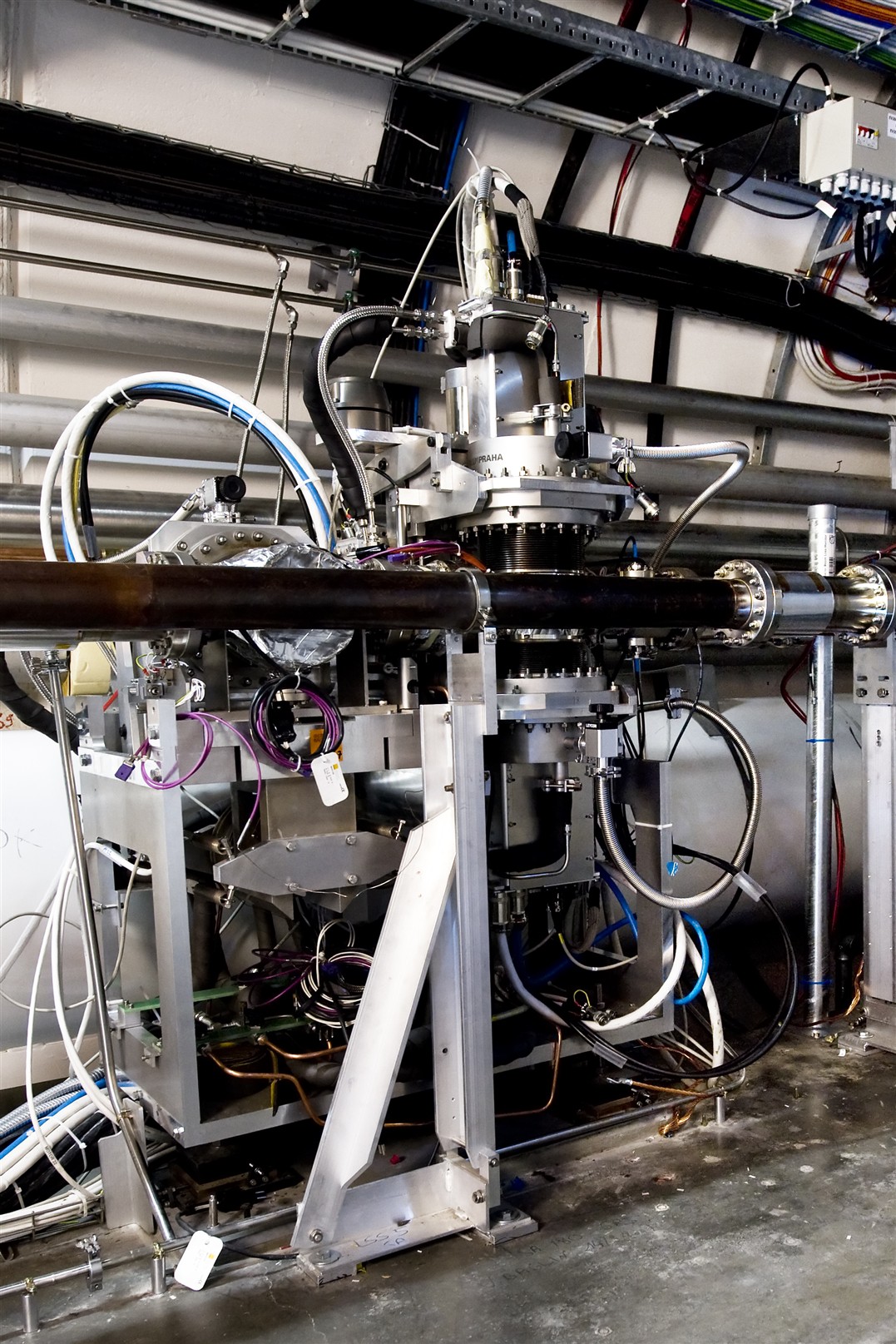TOTEM and LHCf: refinements for the restart
Following the previous two issues, the Bulletin continues its series to find out what the six LHC experiments have been up to since last September, and how they are preparing for the restart. We covered CMS, ATLAS, LHCb and ALICE in previous issues. In this issue we will round up the past 10 months of activity at TOTEM and LHCf.


TOTEM
The past 10 months at TOTEM have been amongst the busiest since the project’s inception. The delay in the LHC startup has certainly had a silver lining for the TOTEM collaboration - not only has it given them a much-needed opportunity to test and install many crucial new detector parts, but also the lower energy range that the LHC will initially operate at in 2009 is perfect for TOTEM physics. "In fact, the LHC almost seems to be following the schedule of TOTEM!" jokes Karsten Eggert, TOTEM spokesperson.
TOTEM is made up of three different detectors spread out over 440 m. The two charged particle trackers, known as T1 and T2, are situated in the CMS cavern on either side of the interaction point. Since last September the remaining three quarters of the T2 detector has now been completely tested and installed. The team is now commissioning all the services to the detector, such as cooling, gas and power supplies.
In-situ cosmic ray tests are not very useful for TOTEM, so instead much more emphasis is put on thoroughly testing each individual detector with the test beam facilities from the SPS and with cosmics before installation. The T1 detector is currently being tested and will be installed later in the year, although as the T1 detector is actually situated inside the CMS endcap the installation has to be carefully planned and coordinated by both collaborations.
The third part of TOTEM, the Roman Pots, has also progressed greatly since last September. The pots are positioned at two distances from the interaction point, 147 m and 220 m. "Now all the Roman Pot Detectors at 220 m have been installed, and we will probably even install a few at 147 m," explained Ernst Radermacher, TOTEM technical coordinator. All the housings for the Roman Pot detectors were completed back in 2007, but for the first beam only 2 of the 24 housings actually had the silicon detectors in place. "The silicon detectors are positioned very close to the beam, just 4 cm at maximum when the pots are in retracted position. Because of the radiation risk in the early stages of operation we didn’t want to install many of the silicon detectors, but after the short LHC run in 2008 we’re much more confident that the detectors won’t be damaged, so we are installing most of the silicon detectors," adds Radermacher.
The silicon detectors actually sit inside the beam pipe, and can move in and out to within one mm of the beam. Commissioning the Roman Pots therefore involves very careful alignment, and calibration of the motorized system that moves the detectors into position.
The recently announced news that the LHC’s restart energy will be 3.5 TeV is also good for the experiment to obtain measurements over a range of different energies. "Furthermore, the basic TOTEM physics program can be explored at the relatively low luminosities during the LHC start," says Karsten Eggert. "We plan to have everything installed and ready for the restart. Then TOTEM will be able to do useful physics for the entire first year of LHC operation," he concludes.
Outreach
As well as preparing for the first physics results, the TOTEM Outreach Coordinators also want to make more resources available for the general public. "It all started with the Open Days last year. We produced a variety of new resources, like posters, and had detector units on display," explains Beatrice Bressan, one of TOTEM’s two outreach coordinators together with Virginia Greco. Since then the collaboration has been making a real effort in outreach activities.
"We are currently working on a new website for the general public, in line with the other LHC experiments," explains Bressan. " We already have a photo gallery, which we will make available to the public. But there will also be many other features, like milestones of the progress of TOTEM." The new website should be online to coincide with the LHC restart.
LHCf

LHCf is made up of two independent detectors, located in the tunnel at 140 m to either side of the ATLAS collision point. Both detectors were completed and ready to take data last year. In fact while the LHC had circulating beams during the short run last September, LHCf successfully detected interactions between the protons and residual molecules in the beam pipe vacuum (known as beam-gas background events), thus proving the detectors are fully functioning.
Since then little work has been needed on the detectors themselves. During the shutdown period LHCf has been mainly working to optimize the data acquisition system (DAQ). In preparation for the restart, they have also been running simulations at different beam energies.
Outreach
The collaboration has recently had a new brochure published. The brochure is also available in Italian and Japanese, as Italian and Japanese researchers make up the majority of the collaboration.

